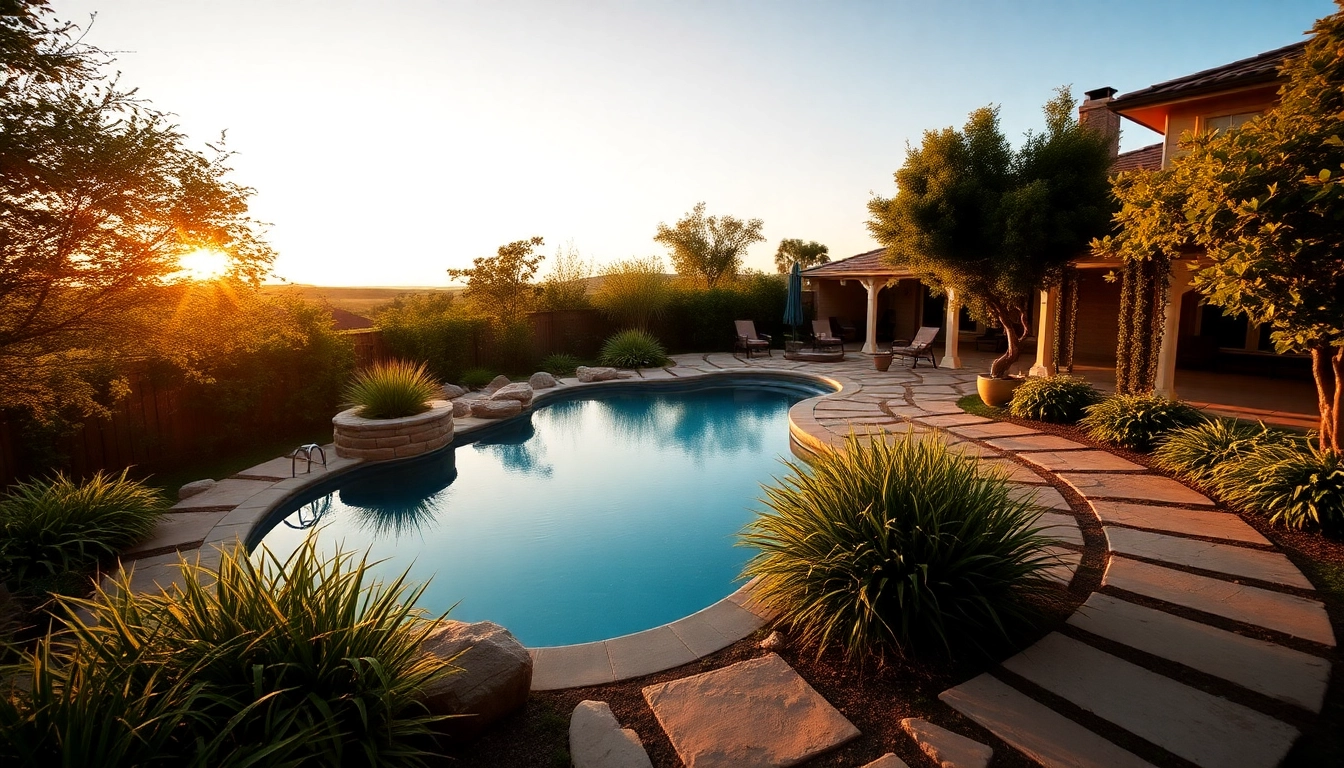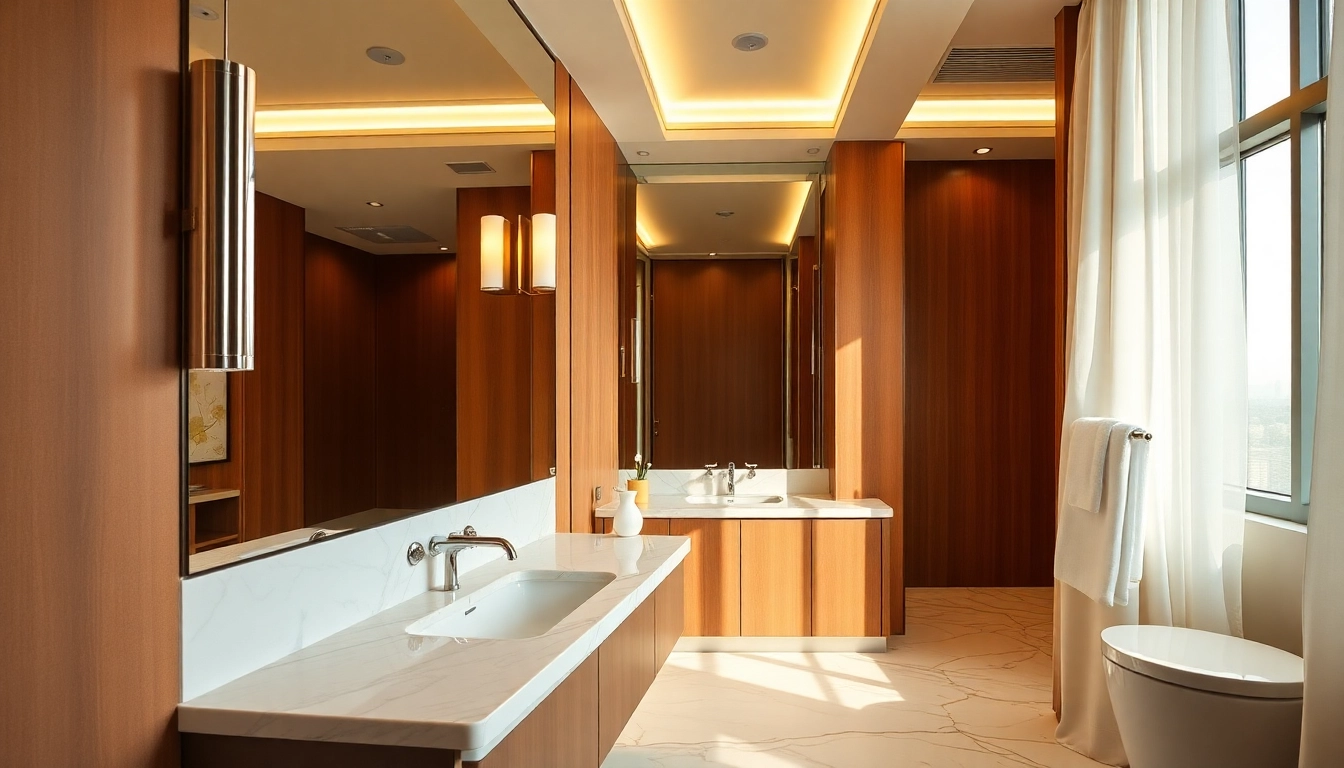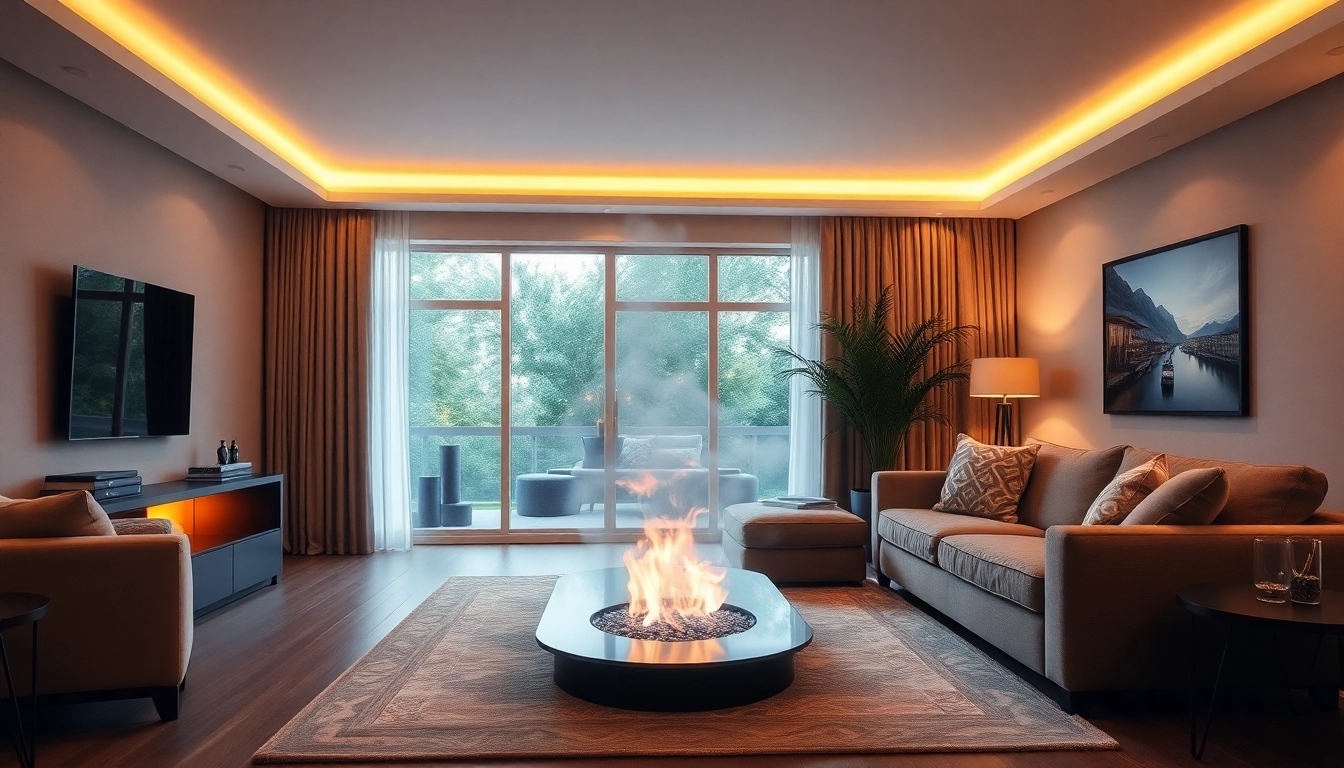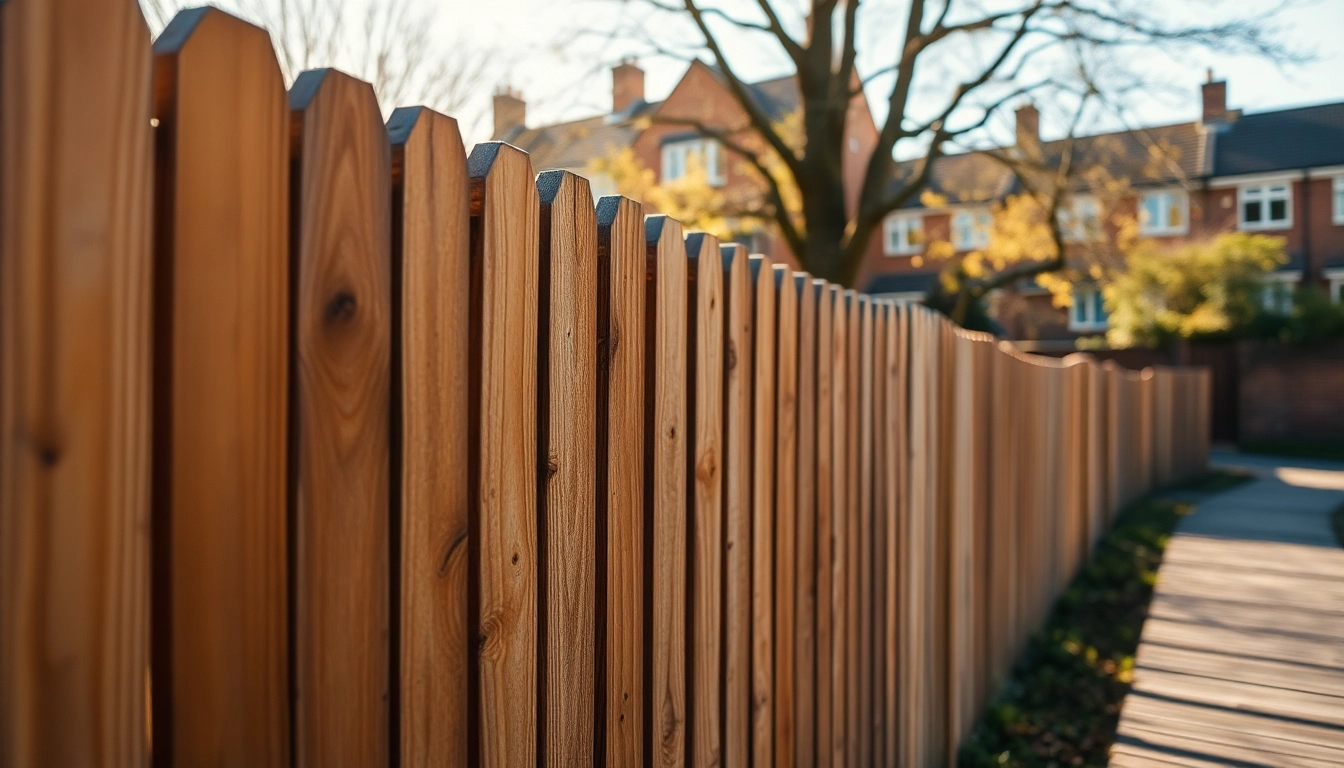Understanding Hardscapes & Pools: The Essential Elements
When it comes to creating a stunning outdoor area, one cannot overlook the combination of hardscapes and pools. Hardscapes refer to the non-living elements in landscaping, such as patios, walkways, and retaining walls, that provide structure and functionality to outdoor spaces. Pools serve as a focal point, enhancing aesthetic appeal and providing a place for relaxation and recreation. By integrating hardscapes & pools into your outdoor design, homeowners can achieve a coherent and inviting outdoor environment.
What Are Hardscapes?
Hardscapes are an essential aspect of outdoor design that encompasses all the hard materials used to create pathways, patios, decks, structures, and walls within your landscape. Unlike softscapes, which consist of plants, trees, and other living elements, hardscapes create functionality and structure. Popular materials used in hardscaping include:
- Concrete: Durable and versatile, concrete can be molded into various shapes and finishes, making it ideal for patios, walkways, and pool decks.
- Bricks: Known for their aesthetic appeal, bricks provide a classic look and are often used for walkways and patio surfaces.
- Pavers: Available in an array of colors, shapes, and sizes, pavers are ideal for creating intricate designs and patterns, particularly around pool areas.
- Flagstone: A natural stone option that provides a rustic aesthetic, flagstone is often used for patios and walkways.
- Gravel: An economical choice for driveways and walking paths, gravel is easy to install and maintain.
The Role of Pools in Outdoor Design
Pools not only serve as a retreat for relaxation and entertainment but also play a crucial role in enhancing the overall aesthetic of your yard. They can act as a centerpiece in your outdoor space, drawing attention and serving as a natural gathering spot for family and friends. Various pool designs, whether a classic rectangular shape or an organic freeform style, can complement different hardscape options and enhance the outdoor ambiance.
Combining Hardscapes and Pools for Aesthetic Appeal
The harmony between hardscapes and pools is pivotal for designing an inviting outdoor space. Thoughtful integration enhances functionality while elevating the overall visual appeal. Considerations for this combination include:
- Utilizing similar materials and colors for hardscapes and pool surroundings, creating a cohesive look.
- Incorporating elements such as lounge areas with furniture or fire pits near the pool, encouraging outdoor living.
- Adding features like waterfalls or fountains that merge water features with hardscaping, fostering a unified design.
Choosing the Right Materials for Your Hardscapes & Pools
Popular Hardscape Materials Explained
Choosing the right materials for your hardscapes and pool areas is crucial not only for aesthetics but also for functionality and durability. Here’s a deeper dive into some popular materials:
- Natural Stone: A highly durable and visually appealing choice, natural stone can be used in various designs, from rustic to modern. Options like slate, granite, and limestone add elegance but can be more costly.
- Concrete Pavers: These are versatile and cost-effective, available in numerous colors and patterns, making them excellent for driveways and pool decks.
- Wood Decking: If you prefer a warm and organic feel, wood decking around pools can be an attractive option although it requires regular maintenance to withstand water exposure.
- Composite Materials: Synthetic materials that mimic wood can provide the same aesthetic without the upkeep, making them ideal for pool decks that endure wet conditions.
How to Select Pool Surrounding Materials
When it comes to selecting materials for around your pool, consider safety, slip resistance, and durability. Non-slip surfaces are paramount, especially in areas with frequent water exposure. Materials such as textured pavers, stamped concrete, and natural stone are excellent choices. Ensure that they are not only stylish but also provide a safe environment for swimmers and guests.
Sustainable Material Options for Hardscapes
In today’s environmentally conscious environment, utilizing sustainable materials for hardscaping is increasingly popular. Options include:
- Recycled Materials: Repurposed bricks, paving stones, or reclaimed wood can reduce waste while adding character to your outdoor space.
- Permeable Pavers: These allow for better water drainage, reducing runoff and promoting a more eco-friendly landscape.
- Natural Stone: Sourced responsibly, natural stone provides durability and a timeless appearance without the environmental impact of synthetic materials.
Design Tips to Enhance Your Hardscapes & Pools
Creating Flow Between Hardscapes and Pools
To achieve a seamless transition between your hardscapes and pools, consider these design strategies:
- Color Palette: Stick to a defined color palette for both hardscapes and pool materials to create visual harmony.
- Design Continuity: Use the same material for walking paths leading to the pool to promote a sense of fluidity.
- Elevation Changes: Incorporate steps or raised areas for lounge chairs or tables, improving interaction with both elements.
Incorporating Landscaping with Hardscapes
Integrating landscaping elements can soften the hard edges of hardscapes while enhancing the overall balance of the design. Successful strategies include:
- Planting native vegetation that complements the hardscape design without overwhelming it.
- Using pots or containers to add color and life while maintaining clean lines in hardscape areas.
- Creating defined planting beds using edging materials aligned with your hardscape selections.
Lighting Ideas to Accentuate Pools and Hardscapes
Proper lighting can transform your hardscapes and pool area into an enchanting evening escape. Ideas to consider include:
- Underwater Lighting: LED lights placed around the pool create a magical ambiance and improve safety during nighttime use.
- Pathway Lights: Strategically placed lighting along walkways can guide guests safely while enhancing visual appeal.
- Spotlights and Uplighting: Use these to highlight specific features like trees, sculptures, or water features.
Maintenance Best Practices for Hardscapes & Pools
Cleaning and Care for Hardscapes
Maintaining your hardscapes is essential to prolonging their life and keeping them looking their best. Best practices involve:
- Regular Sweeping: Dust and debris can accumulate, particularly in crannies and between pavers. Routine sweeping keeps hardscapes looking tidy.
- Power Washing: For stubborn stains or grime, power washing can rejuvenate surfaces, though ensure to select the correct pressure to avoid surface damage.
- Repairing Cracks: Address minor cracks promptly to prevent them from expanding into larger issues, preserve aesthetic value, and enhance safety.
Pool Maintenance: Ensuring Water Quality
Pool maintenance is crucial for ensuring safety and enjoyment. This includes:
- Regular Testing: Checking pH and chlorine levels is vital for maintaining water quality. Aim for a pH between 7.2 and 7.8 for safe swimming conditions.
- Cleaning Filters and Skimmers: Regularly cleaning pool filters and skimmers helps prevent debris accumulation and ensures clear water.
- Shock Treatments: Applying shock treatments periodically can help kill bacteria and algae, keeping the pool fresh and safe.
Protecting Hardscapes Against Weather Elements
Weather conditions can take a toll on hardscapes over time, making protection a vital aspect of maintenance. Strategies include:
- Applying Sealants: Regularly seal paving stones or concrete surfaces to protect against moisture and staining.
- Using Protective Covers: During harsh winter conditions, covering furniture and equipment can prevent damage from snow or ice.
- Routine Inspection: Regularly inspect hardscape areas for signs of erosion or damage, allowing you to address these issues promptly.
Cost Considerations for Hardscapes & Pools Projects
Budgeting Your Hardscape Installation
Planning and budgeting for hardscaping can be daunting, yet understanding costs helps streamline the process. Key considerations include:
- Material Costs: The choice of materials significantly impacts overall costs; some materials like natural stones and high-quality pavers can be more expensive than concrete or gravel.
- Labor Costs: Professional installation may come with labor costs that can vary based on the complexity of the project and your geographical location.
- Long-term Maintenance: Don’t overlook potential future maintenance costs; some materials require more upkeep than others. Factor these into your budget.
Comparing Costs: Pools vs. Hardscaping
When considering overall costs for outdoor projects, it’s crucial to weigh the investment in pools against hardscapes. While pools may require higher initial investment for installation and maintenance, hardscaping can also involve significant expenditure, especially with high-end materials. Assess your overall budget for outdoor improvements to ensure you allocate sufficient funds for both areas without compromising quality.
Finding Affordable Services for Hardscapes & Pools
Searching for reliable services for hardscapes and pools can be challenging. Here are some tips:
- Get Multiple Quotes: Seek estimates from several contractors, ensuring you compare expertise and service offerings along with pricing.
- Check Reviews and Credentials: Ensure that the professionals you hire come recommended and verify their licenses and insurance.
- Ask for Referrals: Speak to friends or family who have previously undertaken similar projects to gain recommendations for trustworthy contractors.



